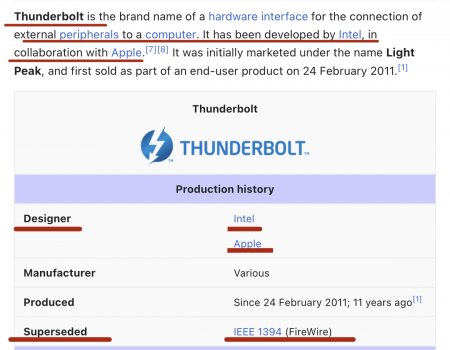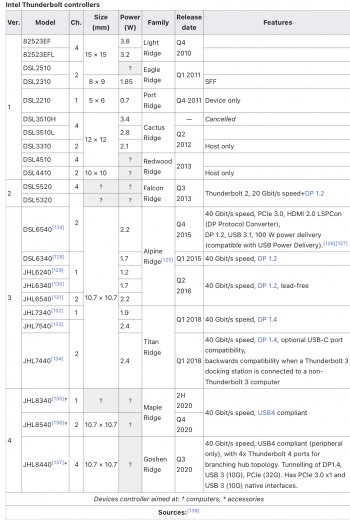Or for that matter USB 4, control chips were out two years ago. Uptake in the industry is still almost zero. ?
(Hopefully that will change with the new generation of PC platforms coming within a year. Hopefully.)
Except the chips pragmatically didn't really come. There was early talk that ASMedia was going to put out competitive chips. Looking over at their website all I see is USB 3.2 gen2 chips.
Fall of 21 Via talked as though has something "big" in USB4 .. but not really.
Cheaper USB4 hubs incoming

www.tomshardware.com
"... The company plans to start shipments of its VL830 to select partners in Q4 2021. If all goes well, expect availability of USB4 docking station and multi-function adapters in early to mid 2022...."
And while they mention "Hub" there in the announcement it really isn't a USB4 hub.
"...VIA Lab’s VL830 is a USB4 Endpoint device controller, featuring an optimized cost-structure and full compliance with USB4 specification. VL830 offers both USB and DisplayPort functionality and operates at full performance when used with Thunderbolt™ 4 or USB4 systems, and is also backward compatible with previous system that support DisplayPort Alternate Mode over USB Type-C, and features integrated USB 3.2 SuperSpeed USB 10Gbps Hub. ..."
Technically it is not a USB4 hub (which requires supporting Thunderbolt) but a USB4 Endpoint(which happens to have a USB3 Hub. a v3 Hub doesn't make it a v4 Hub. ).
So pragmatically all the USB4 "hubs" are still completely reliant on Intel's Goshen Ridge (JHL8440) device controller .
Teardown of the Caldigt TB4 hub.
Caldigit’s latest dock has excellent power specs and a huge number of ports, but lacks a couple features.

dancharblog.wordpress.com
All the Gen 11 mobile Intel processors supported USB4/TB4. So does Gen12 (Alder Lake ) and 13 (Raptor Lake) mobile. Technically, Apple's M1 doesn't qualify for TB4. The M1 Pro and Max got better number of video out support to make the spec. But the bulk of M-series SoCs shipped so far are the M1's. (and Intel is still skipping USB4 by default on desktop SoCs. )
Supposedly, AMD is going to support USB4 on next iteration, but technically they too could skip Thunderbolt 3 ability and still get a USB4 icon/branding. ( Again the only thing which closes loophole of optionally skipping TBv3 is a "USB4 Hub". Hosts and Enpoints can skip it to save a buck. ).
The expectation that there was going to be a rapid , substantial price decrease in USB4 hub pricing was probably misplaced. There are solutions to choose from. There is no "race to the bottom" market pricing forces though (either now or in next year or two).
It’s clear that Intel intends TB5 to maintain the USB-C connector, and thus of course maintain backwards compatibility with USB 4 and TB4. I’d like to see an upgrade happen. But then I’ve wanted 10Gb Ethernet to happen in consumer space for well over a decade, and I’m still waiting.
It makes very little practical sense for Intel to push on to TBv5 when most of the market hasn't fully digested TBv4 yet. Or even USB4 to a pretty large extent ( still not on Intel desktops and AMD is still lagging. ). Even Apple to some extent, the M1 powered iPad Air specs out at USB 3.1 gen 2. (probably to save some power and to enhance the market segmentation to the iPad Pro. ).
Thunderbolt 1 2011
Thunderbolt 2 2013 (+2)
Thunderbolt 3 2015-16 (+3 to fully rolled out) [ Titan ( v3+ was in 2018).
Thunderbolt 4 2020 (+4 )
The more folks involved , the longer the interim period is likely to be. That is a major contributing reason why USB-IF moves at a relatively snails pace most of the time. Tightly coupling "Thunderbolt" to USB-IF roll out momentum is likely going to slow the pace even more.
As pointed out above , no one else but Intel has come out with a real USB4/TB4 hub controller implementation yet. Apple has done their own TB implementation, but they aren't selling to anyone ... so who else? If Intel goes off an relatively quickly "obsoletes" TB4 then where is the incentive for a broader set of implementers? ( similar 'dust up' issues happens on USB3 when Intel was ready to go faster than everyone else and lots of folks wanted a more level playing field so that had choices and broader ecosystem).
Can get 10Gb Ethernet on more than half of the desktop Mac line up at this point. ( Mini , Studio , Mac Pro) . Intel's modern baseline chipset supports 2.5GbE which is at least some progress.
Part of he 10GbE adoption was getting simple unmanaged switch pricing down to what prosumers/consumers expected. I think there was lots of inertia there not to give up on 10GbE switch market up for a long time. And lots of consumer devices are leaning into WiFi (which is close to good enough ... when the whole household isn't on concurrent high-def videoconferencing sessions. ) .
Sometimes the inertia of this industry, combined with market segmentation, is quite frustrating.
It isn't just inertia. There is a dual edged sword of USB ecosystem is that the customers are price anchored to the long lived, mature tech also. If it costs too much then the USB-IF standards committee pragmatically has to put the feature into the "optional" category to get the new tech technically adopted. But since it is optional the implementers shooting for "cost effective" will drop the features and still get a USB (n+1) label ... just without the extra feature "adjectives".






